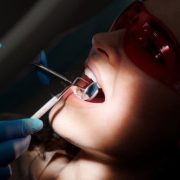Have you ever experienced an unexplained sore in your mouth or a persistent change in your oral health? These could be signs pertaining to a field known as oral pathology, an essential branch of dentistry that dives deep into diseases that affect our mouths.
Understanding the ins and outs of oral pathology can be vital in identifying abnormalities early, thereby increasing the chances of successful treatments and maintaining your overall well-being.
The Oral Cavity and Its Components
Before we delve into the world of oral pathology, let’s familiarize ourselves with the oral cavity’s anatomy. It’s not just about teeth – the oral cavity includes gums, the roof and floor of the mouth, the inside lining of the cheeks and lips, the tongue, the salivary glands, and the tonsils. Knowing what healthy tissues look and feel like sets the stage for recognizing when something might be astray.
Recognizing the Signs of Oral Pathology
It’s essential to be vigilant about the signs of potential oral diseases. Some common symptoms include:
- Sores that don’t heal within two weeks,
- Persistent sore throat or hoarseness,
- Difficulty in chewing, swallowing, or speaking.
If you observe any of these symptoms or other visual indicators, such as abnormal discoloration or chronic bleeding in the mouth, it may be time to seek professional advice. Early intervention can be a game-changer in oral health outcomes.
Types of Oral Diseases
Oral diseases come in various forms. Some of the more common categories include:
Inflammatory and Infectious Diseases
- Oral Thrush
- Gum Disease
- Herpes Simplex Virus
Benign and Malignant Growths
Understanding the difference between non-cancerous (benign) and cancerous (malignant) growths is crucial as it influences the choice of treatment and the disease’s prognosis. Oral cancer screenings are especially important due to the serious nature of these conditions.
Systemic Diseases with Oral Manifestations
Some systemic diseases, like diabetes and Crohn’s disease, can manifest symptoms in the oral cavity, making holistic health care essential.
Diagnostic Methods in Oral Pathology
Diagnosing oral diseases involves a variety of methods, such as:
- Physical Examination: The first step in the diagnostic journey is a thorough examination by a dental professional, who will look for abnormalities in tissue color, texture, and integrity.
- Radiographic and Imaging Techniques: Your dentist may use X-rays, MRI, or CT scans to get a whole picture of your oral health status, especially for diseases that are not immediately apparent upon visual examination.
- Biopsy Procedures: If there’s a suspicious lesion, a biopsy may be necessary. This involves sampling the tissue in question and investigating it under a microscope to get conclusive information about the nature of the disease.
When to Seek Treatment for Oral Diseases
Don’t wait for the annual dental check-up if you notice unusual symptoms. Here are the signs that you should head to your dentist’s office sooner rather than later:
Early Signs of Oral Pathology
- Unexplained Numbness
- Loss of Feeling or Persistent Tingling in the Mouth
- Difficulties With Jaw Movement or Swelling
ORAL PATHOLOGY TREATMENT
Seeking immediate treatment for these signs is imperative. For more information on treatment options and what to expect, click here for a comprehensive guide.
Regular Dental Check-ups
These play a critical role in early detection and maintaining oral health. Dentists typically recommend a check-up every six months, but this frequency might vary based on individual risk factors and health history.
Referral to an Oral Pathologist
Sometimes, your general dentist might refer you to an oral pathologist – a specialist trained to diagnose and treat complex oral diseases, ensuring targeted and effective care.
Preventing Oral Diseases
Preventative measures are the cornerstone of oral health. This includes:
Oral Hygiene and Care
- Brushing Twice Daily
- Using Fluoridated Toothpaste
- Flossing Regularly
Risk Factors and Oral Health
Behavioral factors like tobacco use and excessive alcohol consumption significantly impact oral health status. Awareness and modification of such habits can greatly improve oral health.
Oral Pathology Treatments and Procedures
Addressing oral pathologies might involve:
Medications and Therapies
Depending on the condition, treatment could range from antibiotics to targeted chemotherapy for oral cancers.
Invisalign in Harrisonburg
In some orthodontic cases linked to oral pathologies, treating misaligned teeth can improve oral health. For instance, treatment options such as Invisalign in Harrisonburg are utilized to correct dental and bite issues, potentially mitigating related oral pathologies.
Surgical Interventions
For some oral diseases, surgery may be the best course of action, ranging from simple extractions to more complex reconstructive surgeries.
Advancements in Oral Health Treatments
- Laser therapy in periodontal treatment,
- 3D printing for prosthetics and implants,
- Use of biological drugs in oral medicine.
Living with Oral Diseases
A diagnosis of an oral disease impacts various aspects of life. It’s essential to have a supportive care team and to manage symptoms effectively to maintain quality of life.
- Managing Symptoms: Pain management is often a focus for those living with oral pathologies, necessitating a personalized approach for each individual’s needs.
- Quality of Life Considerations: The psychological and social impact of living with an oral disease can be substantial and should not be overlooked. Seeking support from family, friends, or support groups can be beneficial.
- Communication with Healthcare Providers: Open and ongoing dialogue with your dentist and any specialists involved in your care ensures that your treatment plan remains on track and is adapted as necessary.
All On 4 Dental Implants
For individuals dealing with significant tooth loss due to oral diseases, revolutionary options like All-on-4 dental implants provide a stable, long-term solution that can restore function and appearance.
Conclusion
Your mouth is a mirror of your general health. Keeping up-to-date with the ins and outs of oral pathology plays a crucial role in disease prevention, early detection, and effective treatment. Remember, your dental professional is your ally in maintaining optimal oral health. Don’t hesitate to reach out to them if you notice any changes or have any concerns – your smile will thank you for it.


